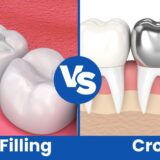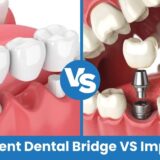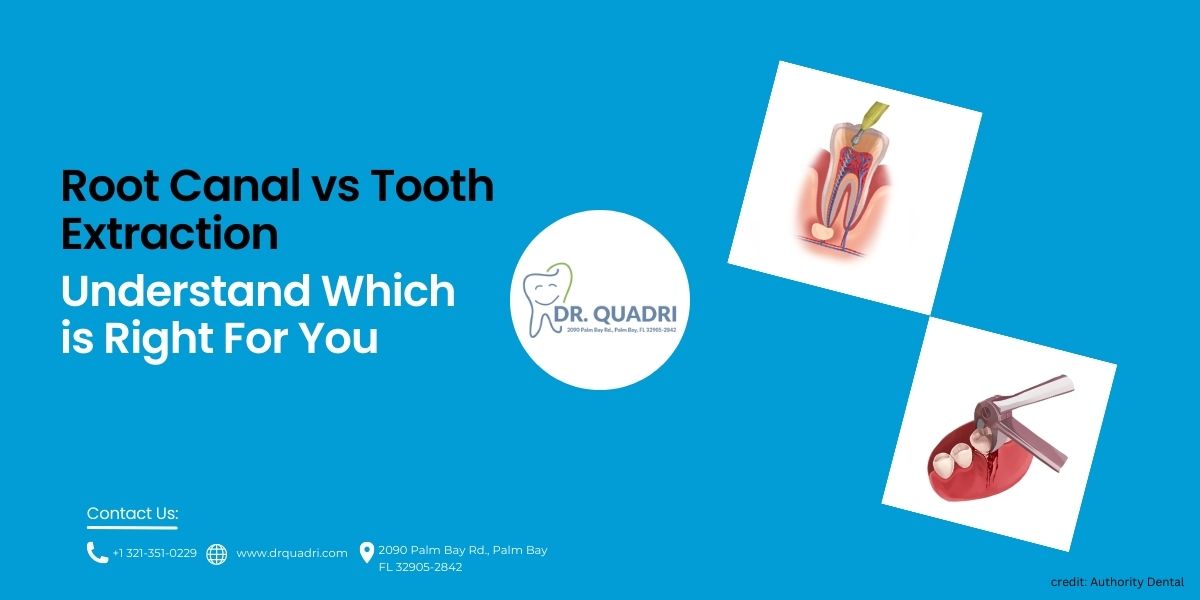Should you make a dental appointment for the root canal or tooth extraction? Since you are here, it is evident that you are looking for information about root canal vs extraction to decide which is best and what type of dental treatment will be the best that eliminates your pain without making a hole in the pocket.
In this article, you will learn the difference between root canal and extraction, the potential risks, cost comparison, and the professional opinion of Dr.Quadri, who has been running his Palm Bay Dental clinic in Florida for over a decade.
Before diving into the article, check out these two pages to understand each dental procedure in detail:
- What is Root Canal Treatment
- What is Tooth Extraction
Now that you have done it let’s get straight to the details.
What is the difference between a root canal and an extraction?
The word “Extraction” in “Tooth Extraction” explains the basic idea of what it means, i.e., tooth removal. However, a root canal, on the other hand, does not leave much context for a non-medical person to understand its meaning.
The root canal refers to saving teeth without removing them, and while many people refer to it as the opposite of tooth extraction, it is not precisely correct.
There is a difference between saving an existing tooth and removing it completely.
Useful Resources:
Potential risks: root canal vs extraction
Below is a table of potential risks you can expect from both dental procedures.
| Root Canal | Extraction |
|---|---|
| The root canal procedure involves removing inner soft tissues. If the removal of tissues is higher, it will create more space for bacteria-causing primary infection in the future.
Your endodontist will instruct you if that is the case, and it is highly advisable to follow the instruction given by your endodontist. |
The most significant risk with tooth extraction is the alignment.
Once the tooth is removed, you will have empty space in your mouth, putting other teeth at risk of being misaligned as time passes. Even if you opt for dental implants, the risk of misalignment can not be avoided 100%. |
| The underfill or overfilling hardly happens once in a while. However, this is for your information and not to scare you.
A filling is a rubber-like substance inserted into your teeth to prevent bacteria and infection. If it is not in the proper amount, you might have stress in the tooth, enamel cracks, or alignment problems later. |
When your teeth are removed from the back, you will feel strain in your jaw muscle when taking a bite, making your eating experience unenjoyable. |
| After the filling, the tooth will be sealed with a sealant. If it is not done correctly, it can damage the filling and cause infection.
Getting a root canal from an experienced endodontist like Dr. Quadri is recommended. |
If you have your wisdom tooth removed already, your dentist might have informed you about the dry socket risk.
It is very much similar in the case of tooth extraction. The pain in the jaw might not be bearable at times, and it will invite additional risk of accidental damage. |
What are the costs of a root canal vs extraction?
The average cost of root canals in the United States ranges between $500 to $1,600 without insurance, depending on which tooth you need to require a root canal. The root canal treatment cost with insurance varies. In most cases, your insurance will help you cover 50-80% of the price. Kindly contact your healthcare insurance provider for accurate details.
Tooth extraction price begins from $75, and it can cost you up to $550, depending on your tooth conditions. From the price point of view, tooth extraction is cheaper than root canal extraction.
Tooth extraction seems like an attractive solution, right? But what about the pain that it brings in the long term? And in the future, if you decide to opt for a dental implant, the cost will go even higher than root canal treatment.
Here’s a fact about the US healthcare industry, according to the Peter G. Peterson Foundation, in 2021, the money spent in the healthcare industry in the US reached $4.3 trillion, which is about $12,900 per person. Read this article for additional information, why are Americans paying more for healthcare.
Rather than making a hasty decision, make an appointment with your nearby dentist for a check-up and understand what solution you are being offered. If you are in Palm Bay, Florida, visit Dr.Quadri’s palm bay dental clinic for a painless solution.
Root Canal vs. Extraction: Which is Better?
We are almost at an end.
You have learned the difference, risks, and cost differentiation. Yet the chances are high that you still need a concise answer.
Root canal treatment is highly chosen over extraction, considering the potential risk it involves. It is low compared to extraction. Also, as mentioned in the article, tooth extraction can lead to dental implant procedure, which costs you even more, so from a far-fetched perspective, the root canal is a better option.
The answer is based on factors analyzed through the experience of experts in the field, including Dr.Quadri. You might get an extraction as a last resort solution when you walk in, given your oral health condition. But if a tooth can be saved, then extraction is not needed.
People Also Ask the Following Question
1. How do you know which procedure to get?
Always go to the dentist to identify your oral health problems in detail to get a proper solution rather than making assumptions yourself.
2. When is a root canal better than an extraction?
Tooth extraction can lead to more significant problems in the long run, and if your oral health problem can be fixed without removing the teeth, the root canal is a better option.
3. Is a root canal worth it?
The success ratio of the root canal is high, and if your dentist suggests a root canal and you follow the advice for a specific time, the root canal is definitely a worthy investment in your oral health.
4. Which is more painful, a root canal or an extraction?
According to the American Association of Endodontists, people who have taken a root canal describe it as painless compared to those who opted for tooth extraction. Although, in both procedures, you will be given local anesthesia to reduce pain. However, the pain is less in the root canal.






